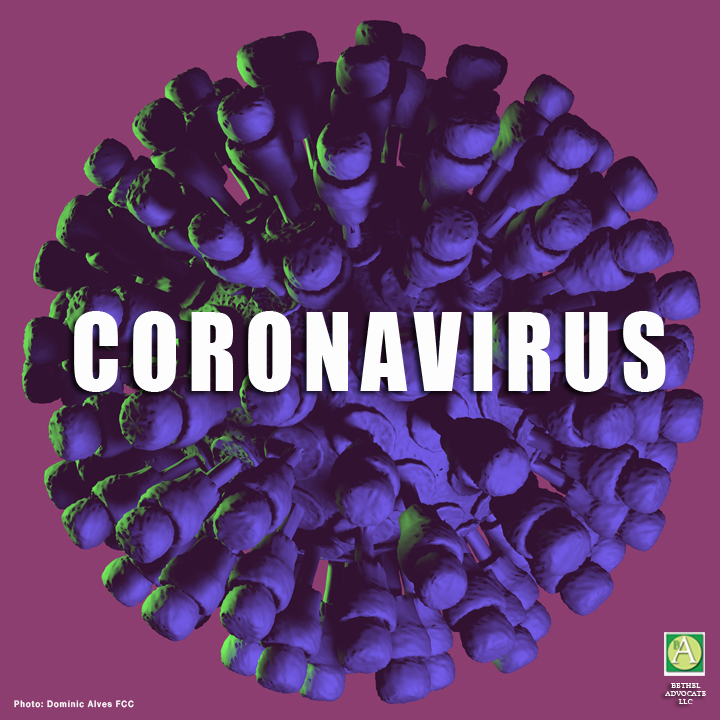
Report by Paula Antolini, March 13, 2020, 10:01AM EDT

Bethel Resident Suneetha Malkani, who is a senior executive involved in Marketing Strategy and Technology & Analytics, product builder and entrepreneur, compiled a summary of useful pieces of information on the Coronavirus from reliable sources such as CDC, US & UK govt. sites and reputed publishers.
Read the report by Suneetha Malkani here:
This week has seen heightened worries about the potential impact from the Coronavirus.
The most disturbing aspect of COVID-19 appears to be the state of the limited, nascent, albeit evolving knowledge about the ailment.The complete clinical picture with regard to COVID-19 is not fully known –
Reported illnesses have ranged from very mild (including some with no reported symptoms) to severe, including illness resulting in death. While information so far suggests that most COVID-19 illness is mild, a report out of China suggests serious illness occurs in 16% of cases. Older people and people of all ages with severe underlying health conditions – like heart disease, lung disease and diabetes, for example – seem to be at higher risk of developing serious COVID-19 illness. Source: https://www.cdc.gov/coronavirus/2019-ncov/summary.html#severity
Another source of alarm is the lack of clear understanding of how this virus spreads.
Because it’s a new illness, we do not know exactly how coronavirus spreads from person to person. Similar viruses are spread in cough droplets. Source: https://www.nhs.uk/conditions/coronavirus-covid-19/
As we can all agree, this situation has quickly evolved from being a health crisis, to a global economic crisis. There is a lot of anxiety and a lot of information as well as misinformation doing the rounds. Here is a summary of excerpts that I have compiled from reliable sources to be used as a quick primer. They are listed in the order of importance or actions to take, down to trivia.
1. What should I do if I suspect I have coronavirus?
Source: https://www.cdc.gov/coronavirus/2019-ncov/downloads/sick-with-2019-nCoV-fact-sheet.pdf
Summary: If you are sick with COVID-19 or suspect you are infected with the virus that causes COVID-19, follow the steps below to help prevent the disease from spreading to people in your home and community.
- Stay home except to get medical care
- Separate yourself from other people and animals in your home
- Call ahead before visiting your doctor
- Wear a face mask, cover your coughs and sneezes, avoid sharing personal household items, clean your hands often, clean all “high-touch” surfaces every day
- Monitor your symptoms Seek prompt medical attention if your illness is worsening (e.g., difficulty breathing). Before seeking care, call your healthcare provider and tell them that you have, or are being evaluated for, COVID-19. Put on a facemask before you enter the facility. These steps will help the healthcare provider’s office to keep other people in the office or waiting room from getting infected or exposed.
- Discontinuing home isolation Patients with confirmed COVID-19 should remain under home isolation precautions until the risk of secondary transmission to others is thought to be low. The decision to discontinue home isolation precautions should be made on a case-by-case basis, in consultation with healthcare providers and state and local health departments.
*****
These are practical do’s and don’ts from the UK Government’s health service site if you if you have coronavirus symptom
Source: https://www.nhs.uk/conditions/coronavirus-covid-19/self-isolation-advice/
Do’s
- try to keep at least 2 metres (3 steps) from other people in your home, particularly older people or those with long-term health conditions
- ask friends and family and delivery services to deliver things like food shopping and medicines – but avoid contact with them
- sleep alone if possible
- regularly wash your hands with soap and warm water for at least 20 seconds
- try to stay away from older people and those with long-term health conditions
- drink plenty of water and take everyday painkillers, such as paracetamol and ibuprofen, to help with your symptoms
- If you do need to leave home to get to work, you may want to look into Forearm Shield converts Push/Pull Doors so you are not touching any handles wherever you are going.
- do not have visitors (ask people to leave deliveries outside)
- do not leave the house, for example to go for a walk, to school or public places
- Diluting your household bleach. To make a bleach solution, mix: 5 tablespoons (1/3rd cup) bleach per gallon of water OR 4 teaspoons bleach per quart of water
- Alcohol solutions
- A quick list of do’s an don’ts from The Atlantic as a practical guide to social distancing. https://www.theatlantic.com/family/archive/2020/03/coronavirus-what-does-social-distancing-mean/607927/
- A quick summary and strategies for social distancing from the University of Chicago. https://safety-security.uchicago.edu/emergency_management/all_hazard_safety_procedures/social_distancing/
- An illustration on how social distancing, self-quarantines and canceling events really helps https://www.vox.com/2020/3/10/21171481/coronavirus-us-cases-quarantine-cancellation
Don’t
2. Should I avoid contact with pets or other animals if I am sick with COVID-19?
Source: https://www.cdc.gov/coronavirus/2019-ncov/faq.html#animals
You should restrict contact with pets and other animals while you are sick with COVID-19, just like you would around other people. Although there have not been reports of pets or other animals becoming sick with COVID-19, it is still recommended that people sick with COVID-19 limit contact with animals until more information is known about the virus. When possible, have another member of your household care for your animals while you are sick. If you are sick with COVID-19, avoid contact with your pet, including petting, snuggling, being kissed or licked, and sharing food. If you must care for your pet or be around animals while you are sick, wash your hands before and after you interact with pets and wear a face mask.
3. How should I clean and disinfect?
Clean AND disinfect frequently touched surfaces daily. This includes tables, doorknobs, light switches, countertops, handles, desks, phones, keyboards, toilets, faucets, and sinks. If surfaces are dirty, clean them: Use detergent or soap and water prior to disinfection.
To disinfect:
Most common EPA-registered household disinfectants will work. Use disinfectants appropriate for the surface.
Options include:
Follow manufacturer’s instructions for application and proper ventilation. Check to ensure the product is not past its expiration date. Never mix household bleach with ammonia or any other cleanser. Unexpired household bleach will be effective against coronaviruses when properly diluted.
Ensure solution has at least 70% alcohol. Other common EPA-registered household disinfectants. Products with EPA-approved emerging viral pathogens [7 pages] claims are expected to be effective against COVID-19 based on data for harder to kill viruses. Follow the manufacturer’s instructions for all cleaning and disinfection products (e.g., concentration, application method and contact time, etc.).
4. How should I protect my employees?
The following link has detailed guidance as provided by the US Department of Labor.
Source: https://www.osha.gov/SLTC/covid-19/controlprevention.html#health
5. What precautions are being recommended in Healthcare settings?
This link below is being kept updated by CDC. With the healthcare system likely to be overwhelmed, it may a good idea to be prepared with what to expect, and how healthcare personnel are likely preparing, should you unfortunately have to be in a healthcare setting.
6. What is the guidance on how to identify and assess 2019 Novel Coronavirus
This flowchart from the CDC shows the process being used to identify and evaluate patients.
https://www.cdc.gov/coronavirus/2019-ncov/hcp/2019-nCoV-identify-assess-flowchart-508.pdf
7. What are recommendations and restrictions around travel?
US residents may refer to the following sources from CDC and the US Department of State.
International Travel Advice:
Source: https://www.cdc.gov/coronavirus/2019-ncov/travelers/index.html
Source: https://travel.state.gov/content/travel/en/traveladvisories/traveladvisories.html/
Do check with the destination country’s respective border protection and health department for further advise.
Countries with confirmed cases may be found at this frequently updated page:
https://www.cdc.gov/coronavirus/2019-ncov/locations-confirmed-cases.html
How can I stay connected while traveling? Enroll in this free service provided by the US department of State: Smart Traveler Enrollment Program(STEP). See also STEP FAQs.
Domestic Travel Advice:
https://www.cdc.gov/coronavirus/2019-ncov/travelers/travel-in-the-us.html
US Locations with incidence of Coronavirus may be found at this frequently updated page: https://www.cdc.gov/coronavirus/2019-ncov/cases-in-us.html
8. What are some community mitigation strategies for COVID-19.
Please refer to this very detailed document (10 page PDF) from the CDC.
https://www.cdc.gov/coronavirus/2019-ncov/downloads/community-mitigation-strategy.pdf
9. What are COVID-19 symptoms, should I be tested?
Current symptoms reported for patients with COVID-19 have included mild to severe respiratory illness with fever, cough, and difficulty breathing.
Source: https://www.cdc.gov/coronavirus/2019-ncov/faq.html#protect
If you develop symptoms such as fever, cough, and/or difficulty breathing, and have been in close contact with a person known to have COVID-19 or have recently traveled from an area with ongoing spread of COVID-19, stay home and call your healthcare provider. Older patients and individuals who have severe underlying medical conditions or are immunocompromised should contact their healthcare provider early, even if their illness is mild. If you have severe symptoms, such as persistent pain or pressure in the chest, new confusion or inability to arouse, or bluish lips of face, contact your healthcare provider or emergency room and seek care immediately. Your doctor will determine if you have signs and symptoms of COVID-19 and whether you should be tested.
Source: https://www.cdc.gov/coronavirus/2019-ncov/faq.html#protect
10. Who is most at risk in the context of COVID-19
Source: Appendix section of this CDC document – https://www.cdc.gov/coronavirus/2019-ncov/downloads/community-mitigation-strategy.pdf
Underlying medical conditions that may increase the risk of serious COVID-19 for individuals of any age.
• Blood disorders (e.g., sickle cell disease or on blood thinners)
• Chronic kidney disease as defined by your doctor. Patient has been told to avoid or reduce the dose of medications because kidney disease, or is under treatment for kidney disease, including receiving dialysis
• Chronic liver disease as defined by your doctor. (e.g., cirrhosis, chronic hepatitis) Patient has been told to avoid or reduce the dose of medications because liver disease or is under treatment for liver disease.
• Compromised immunesystem (immunosuppression) (e.g., seeing a doctor for cancer and treatment such as chemotherapy or radiation, received an organ or bone marrow transplant, taking high doses of corticosteroids or other immunosuppressant medications, HIV or AIDS)
• Current or recent pregnancy in the last two weeks
• Endocrine disorders (e.g., diabetes mellitus)
• Metabolic disorders (such as inherited metabolic disorders and mitochondrial disorders)
• Heart disease (such as congenital heart disease, congestive heart failure and coronary artery disease)
• Lung disease including asthma or chronic obstructive pulmonary disease (chronic bronchitis or emphysema) or other chronic conditions associated with impaired lung function or that require home oxygen
• Neurological and neurologic and neurodevelopment conditions [including disorders of the brain, spinal cord, peripheral nerve, and muscle such as cerebral palsy, epilepsy (seizure disorders), stroke, intellectual disability, moderate to severe developmental delay, muscular dystrophy, or spinal cord injury].
While the above are high-risk categories, the escalating rate of spread of the disease suggests that ALL of us need to be careful and follow suitable precautions. Here are some popular figures known to have been affected.
Sophie Grégoire Trudeau, wife of Canadian PM Justin Trudeau
11. What does the infection do to your body?
Reiterating from the first paragraph, the most disturbing aspect of COVID-19 appears to be the state of the limited, nascent, albeit evolving knowledge about the ailment. Here are a few articles from reliable media sources, that outline the understanding of the prognosis as of today.
https://www.vice.com/en_us/article/4agxqm/exactly-how-new-coronavirus-affects-body-china-pneumonia
https://www.latimes.com/science/story/2020-02-29/how-this-coronavirus-kills-its-victims
In summary, the most common cause of death from COVID-19 appears to be from respiratory failure, caused by lungs being filled by fluid, resulting in organ failure. The fluid fills to such an extent that even ventilators are not able to help patients breathe, thus causing death.
12. What is social distancing and how will it help mitigate the spread of COVID-19?
By now you have no doubt heard of “social distancing” as a means to prevent further spread of COVID-19. Here’s
13. Finally, what really is Coronavirus?
Here is a detailed description of Coronavirus and COVID-19 from the American Lung Association. https://www.lung.org/lung-health-and-diseases/lung-disease-lookup/coronavirus/
14. Anything else?
Here’s a COVID-19 Glossary for the curious.
https://www.opb.org/news/article/covid-19-coronavirus-glossary-medical-scientific-terms/
I hope you find this information helpful.
I run a startup helping small businesses. Prior to this gig, I led marketing and digital transformation initiatives at corporates. Should you or a small business you know need expedient help with reaching your customers and updating your marketing processes, in the midst of this pandemic, please do connect with me. It’d be a privilege to help you with this fight to save our societies from the health and economic crisis.
Healthy citizens are the greatest asset any country can have. —Winston Churchill
Stay healthy!
*****
ABOUT SUNEETHA MALKANI
I’m focused on delivering valuable, note worthy, transformative human experiences, through products and services I am building. I’ve been a senior Marketing and Analytics executive with experience applying digital marketing technology and Big Data analytics expertise to drive growth. I have held B2C and B2B marketing leadership positions at Global majors including GE Capital, MasterCard, Qualcomm, Reader’s Digest. I have experience in client service, business development, consulting and have delivered on projects for Fortune 500 companies including top 50 major banks and retailers.
I am a collaborative change agent, C-level communicator. My broad macro-economic knowledge and thought leadership is complemented by strong executional ability. I am a highly organized, KPI driven, people manager having led diverse, global teams and have experience sourcing world class tech talent. I have managed significant promotional and Capex budgets, vendors, agencies, legal contracts.
• Product Development
• UI/UX Design
• DevOps
• Big Data, Analytics
• Digital Strategy
• Business Planning and Forecasting
• Strategic Planning & Global Marketing
• Brand & Product Strategy, Positioning, Pricing
• PR & Brand Communications
• P&L Management
• Business Development
• Client Management, Management Consulting
• Digital Product Development
• Digital & Omni-Channel Marketing
• Customer Acquisition & Retention, Loyalty
• ROI Optimization
• Advanced Analytics/Big Data
• Data Monetization leveraging 1st and 3rd party data
• Partnership Management
• Business Transformation, Six-Sigma Process Management, NPD
• Talent Management
• Legal Contract Management

###

Leave a Reply